Visit Sainte Chapelle in Paris
The Sainte Chapelle is one of the top sights to visit in Paris, for its beauty and fascinating history. This building of Medieval Paris is located on Ile de la Cité (Paris 1), near the Conciergerie or Notre Dame Cathedral.
Originally part of the Royal Residence, the Sainte Chapelle in Paris is the finest Royal Chapel to be built in France, and it features a truly exceptional collection of stained glass windows. A visit to the Sainte Chapelle stained glass windows is on our list of the best things to do in Paris.
This Royal Chapel can’t be seen from the street because it’s set in Paris’ Courthouse. The only way to visit Sainte Chapelle in Paris, even from outside, is with a ticket.
A visit to the Sainte Chapelle windows is one of the top things to do in Paris. We recommend visiting the Sainte Chapelle in Paris in the following itineraries:
- 1 day in Paris itinerary
- 2 days in Paris itinerary
- 3 days in Paris itinerary
- 4 days in Paris itinerary
- 5 days in Paris itinerary
- 6 days in Paris itinerary
- 7 days in Paris itinerary
Best Time to Visit Sainte Chapelle
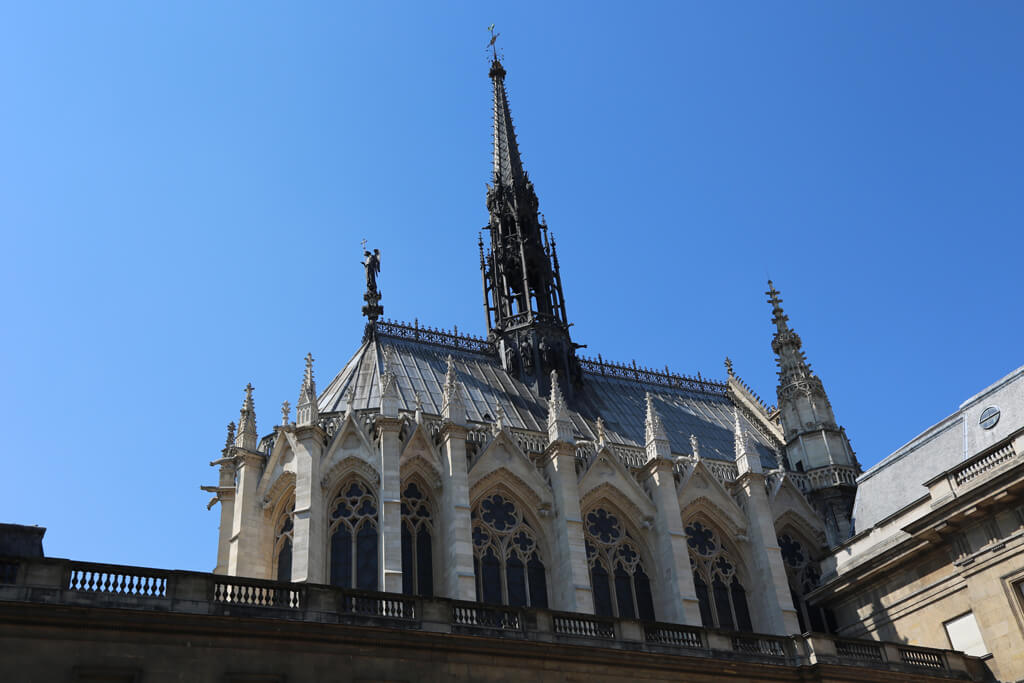
The short answer is that there’s never a bad time to visit Sainte Chapelle. The Sainte Chapelle opening hours in the fall and winter are adjusted so visitors don’t come too late and risk being disappointed by the lack of light.
DID YOU KNOW? The skip-the-line access to the Sainte Chapelle in Paris is also included in the Paris Museum Pass and in the Go City Pass.
1. Best Time to Visit Sainte Chapelle in Paris to Avoid the Crowds
The Sainte Chapelle opens every day. Saturday and Sunday are the busiest days to visit Sainte Chapelle. On Monday, many museums in Paris are closed, so it is also a busy day for visiting Sainte Chapelle.
Sunset is the most crowded time to visit Sainte Chapelle, so if you are not that interested in photography, avoid sunset.
Try to visit Sainte Chapelle first thing in the morning when it is not crowded yet, and you can explore the Royal Chapel in peace.
TIP: Visit Sainte Chapelle + the Conciergerie with this skip-the-line combo ticket and save time and money!
2. Best Time to Visit Sainte Chapelle for Photography
Flash photography in Sainte Chapelle is prohibited, so natural lighting is paramount.
Most people think the best time to visit Sainte Chapelle’s windows is in the summer when the shades of blue and red change from hour to hour in the sun. However, we prefer visiting the Sainte Chapelle stained glass windows in winter. Light in winter is more harmonious, and all windows are equally lit.
Cloudy days are not ideal, but all the windows are evenly lit. When the sun is out, half of the Sainte Chapelle windows are lit at best.
3. Best Time of Day to Visit Sainte Chapelle for Photography
The best time to capture the Sainte Chapelle Stained Glass windows in all their glory is during sunset (one hour or so before sunset) – Check out sunset times in Paris.
Remember, however, that the last entry is 40 minutes before closing!
When the sun is overhead, the rays don’t enter at an angle, so it is not a good time for photography.
4. Best Time to Visit the Sainte Chapelle Stained Glass Windows for a Unique Experience
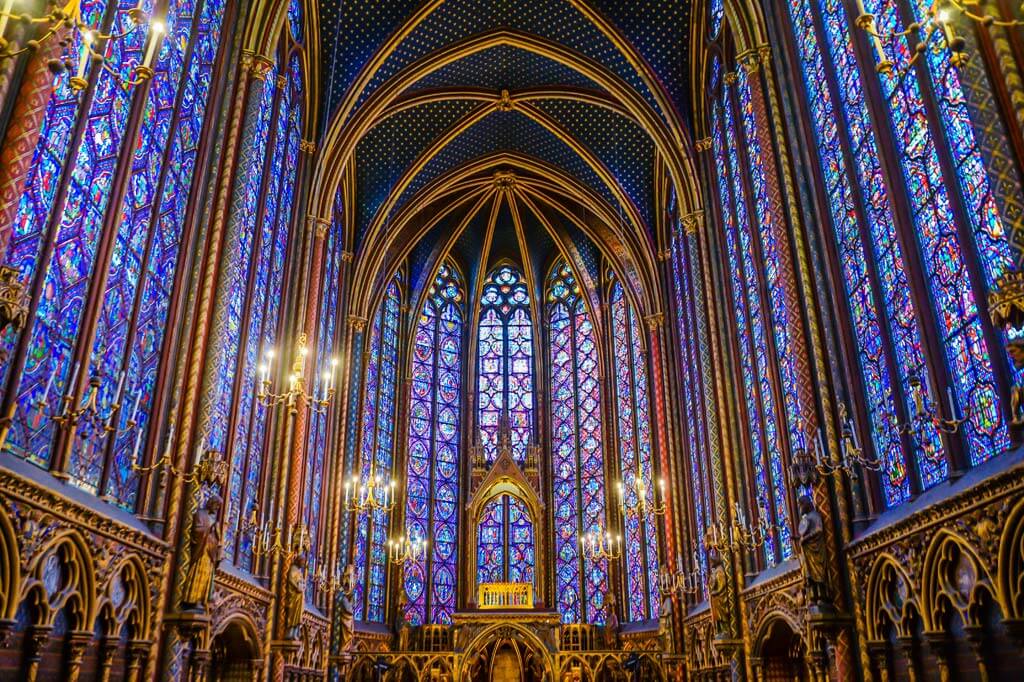
The Sainte Chapelle proposes classical music concerts (1 hour) in the evening. Enjoying the music in such a spectacular setting is a unique experience. Check out the concert program here.
At this time, regular visitors have gone, and there’s plenty of time before and after the concert to walk around and visit the Royal Chapel in peace.
Facts about Sainte Chapelle in Paris
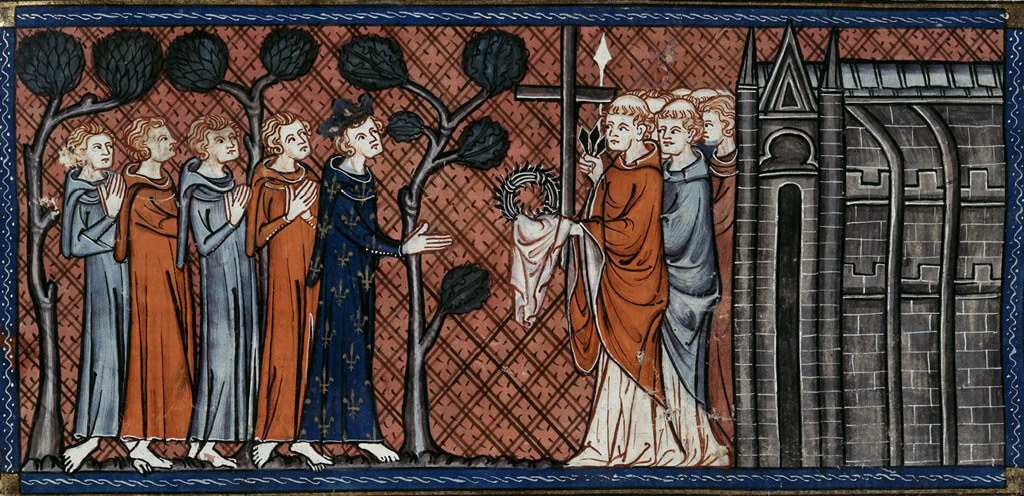
The Sainte Chapelle in Paris was built in the mid-13th century by King Louis IX (future Saint Louis) at the heart of the Royal Residence, the Palais de la Cité. It was built to house the relics of the Passion of Christ and served as the Royal Family’s private chapel.
King Louis IX bought the Saint Relics to Emperor Baudouin II of Constantinople. Originally there were 22 relics, being the Crown of Thorns the most important.
The Crown of Thorns was bought for 135,000 livres tournois – about half of the annual income of the Royal Domain at that time – while the construction of the Sainte Chapelle cost about 40,000 livres tournois, three times less than the Crown of Thorns.
The Sainte Chapelle is an excellent example of radiant Gothic architecture, marked by a sense of weightlessness and a strong vertical thrust. This style of architecture allowed builders to achieve vertiginous heights for their vaulted ceilings.
The Sainte Chapelle in Paris has a particular design in two different stages: the lower level was used by the staff of the Royal Palace, while the Royal Family and their guests used the upper level.
The Upper Chapel is adorned with a unique collection of stained glass windows. The Sainte Chapelle windows consist of 15 panels and a large rose window. The panels tell the story of the Bible and how the Saint Relics housed there came to Paris.
There are other Sainte Chapelles in France, but the Sainte Chapelle in Paris was the first to be built. To be considered as “Sainte Chapelle,” it needs to follow some criteria:
- Have the same proportions as the Sainte Chapelle in Paris, but not necessarily the same dimensions
- Host at least one relic of the Passion of Christ
The nearest Sainte Chapelle is located inside Château de Vincennes, one of the most beautiful castles near Paris. Commissioned by King Charles V, it was consecrated under the rule of King Henri II, and it hosted a fragment of the Holy Cross brought from the Sainte Chapelle in Paris. Don’t miss this beautiful (and recently restored) Sainte Chapelle!
Sainte Chapelle Guide
The Sainte Chapelle is one of the most unique places to see in Paris, so you cannot miss it! This Sainte Chapelle guide is mainly dedicated to the architecture and decoration of the Royal Chapel (Upper Chapel).
1. Lower Chapel
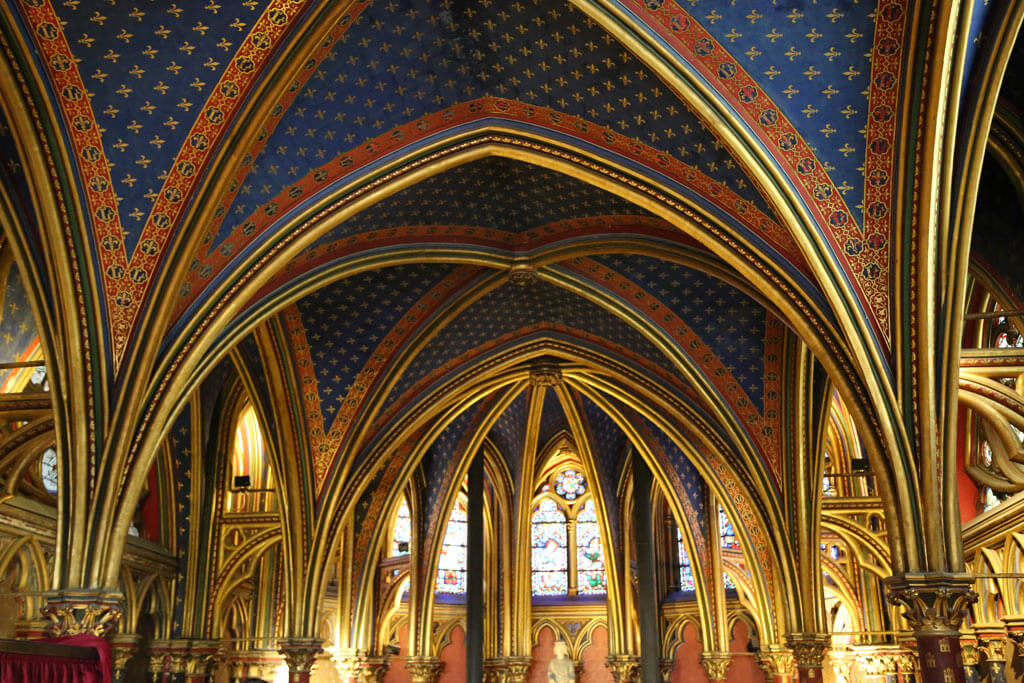
The visit to Sainte Chapelle starts with the Lower Chapel, dedicated to parish services. The dark atmosphere of the Lower Chapel evokes a crypt. There are no outstanding stained glass windows here, but it’s worth spending some time admiring the details.
The nave has four bays. Construction of the vaults raised some technical problems due to the dimensions of the Chapel, and small columns reinforced with tie beams were added to reduce the width which had to be covered.
In this Lower Chapel, the vaults are decorated with fleur de lys. The fleur de lys is also found on the columns and ribs, alternating with towers. The fleur de lys symbolizes King Louis IX, while the towers represent the King’s mother, Blanche of Castille.
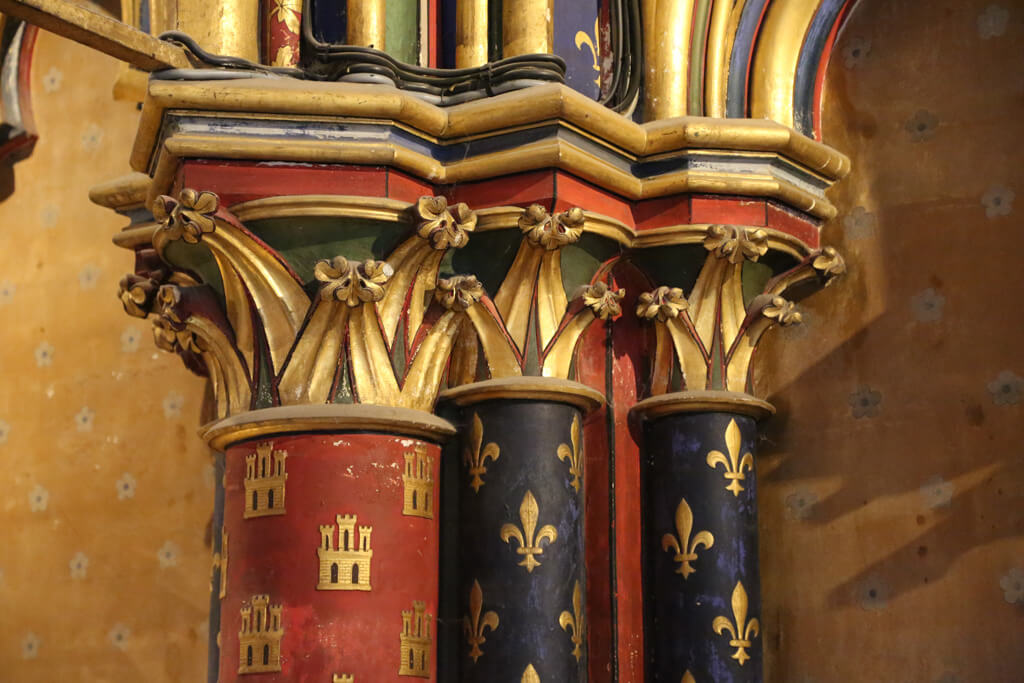
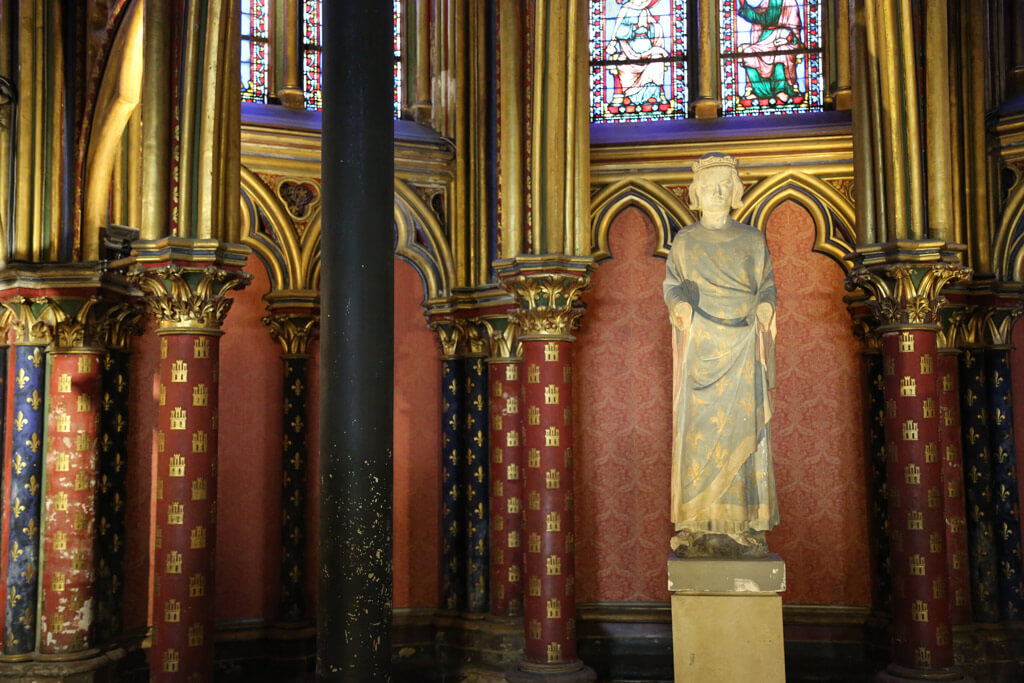
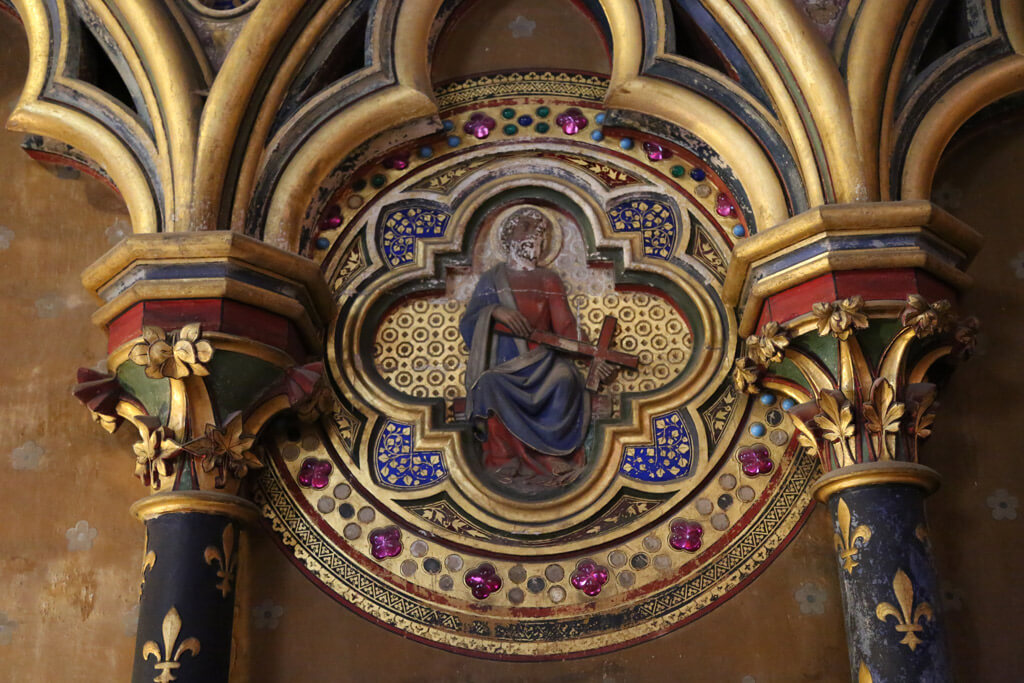
DON’T MISS:
- The oldest wall painting in Paris (13th century). Located on the left side, above the door to the former sacristy, it depicts the Annunciation
- The beautiful choir, with the statue of Saint Louis. The black columns were added to support the weight of the heavy reliquary located in the Upper Chapel
- The walls’ decoration, with 12 medallions featuring the apostles.
2. Upper Chapel
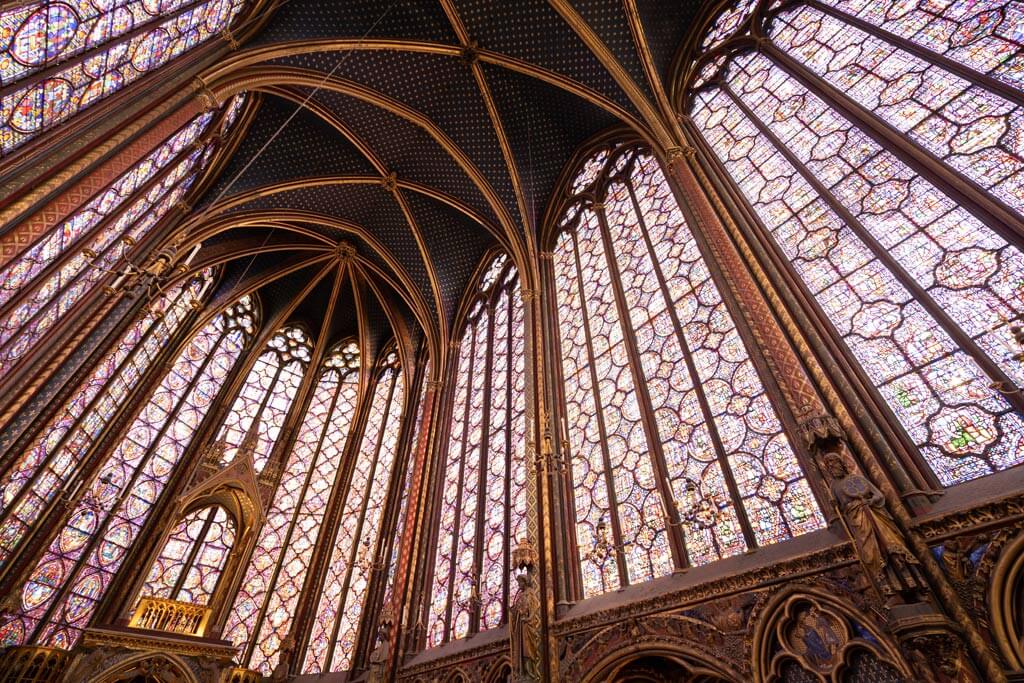
A hidden staircase at the side of the entrance leads to the Upper Chapel, used by the Royal Family. This chapel has fifteen bay windows and a rose window.
Here, the walls are much taller than in the Lower Chapel, and they are in great part covered only by colorful stained glass, giving the feeling of entry into the Heavenly Jerusalem, bathed in light and color.
In this Upper Chapel, the vaults are decorated with stars instead of fleur de lys.
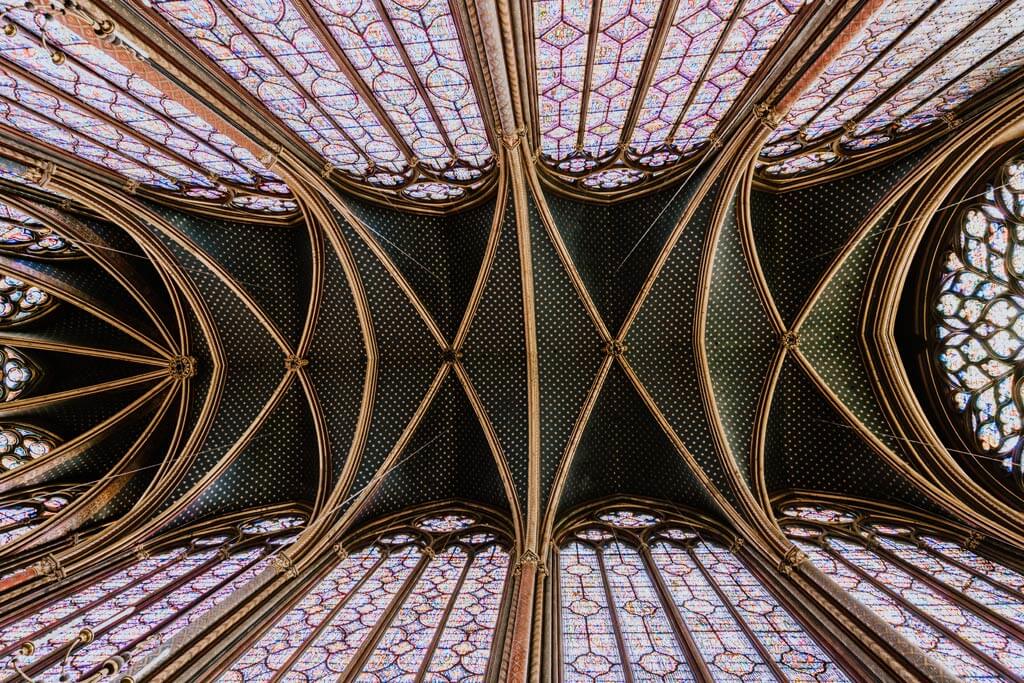
The Upper Chapel hosted the Saint Relics and other treasures inside the Great Shrine. Unfortunately, this was melted during the French Revolution, and its content was dispersed. Today, the Saint Relics are part of the Treasure of Notre Dame Cathedral (saved from the fire).
DON’T MISS:
- The Sainte Chapelle stained glass windows
- Sainte Chapelle rose window, depicting St John’s vision of the Apocalypse – This is depicted on the rose window facing west in line with the setting of the sun
- The 100 foliage-decorated capitals along the lateral walls, all different
- The Upper Chapel’s porch. Its tympanum represents the Last Judgement, and it deserves to admire it with attention to the details.
Sainte Chapelle Stained Glass Guide
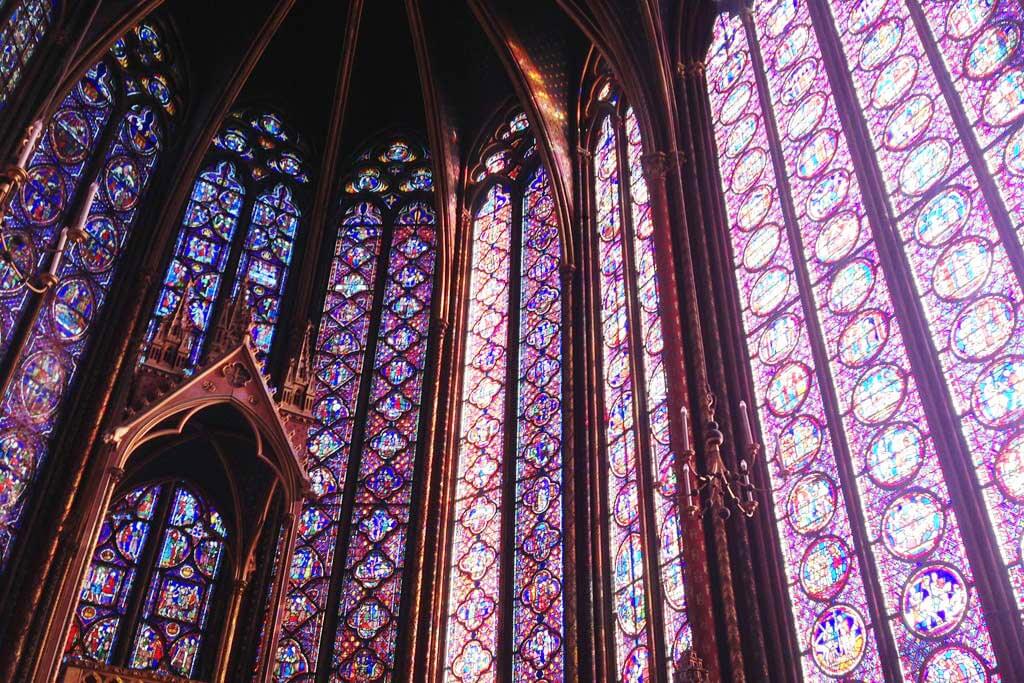
This Sainte Chapelle stained glass guide is dedicated to the techniques and description of the Sainte Chapelle stained glass windows.
The 15 bay windows and the rose window in the Upper Chapel (15.4 m height and 4.25 m width) are considered masterworks of stained glass art. They comprise 1,113 little pieces of glass, most dating from the 13th century.
Only five colors are used in the Sainte Chapelle windows – blue (from cobalt), red and green (from copper), purple (from manganese), and yellow (from antimony).
Details such as facial expressions and folds in fabrics were added with the ‘grisaille’ technique. This technique uses a mixture of powdered glass and iron oxide diluted in water and vinegar. The mixture is applied to the colored glass with a paintbrush.
The painted pieces of glass are then fired a second time at 600C to fix the grisaille.
Then the pieces of glass are assembled scene by scene and held together with strips of channeled lead. Finished sections of the stained glass windows are never very large to ensure they don’t collapse under their weight.
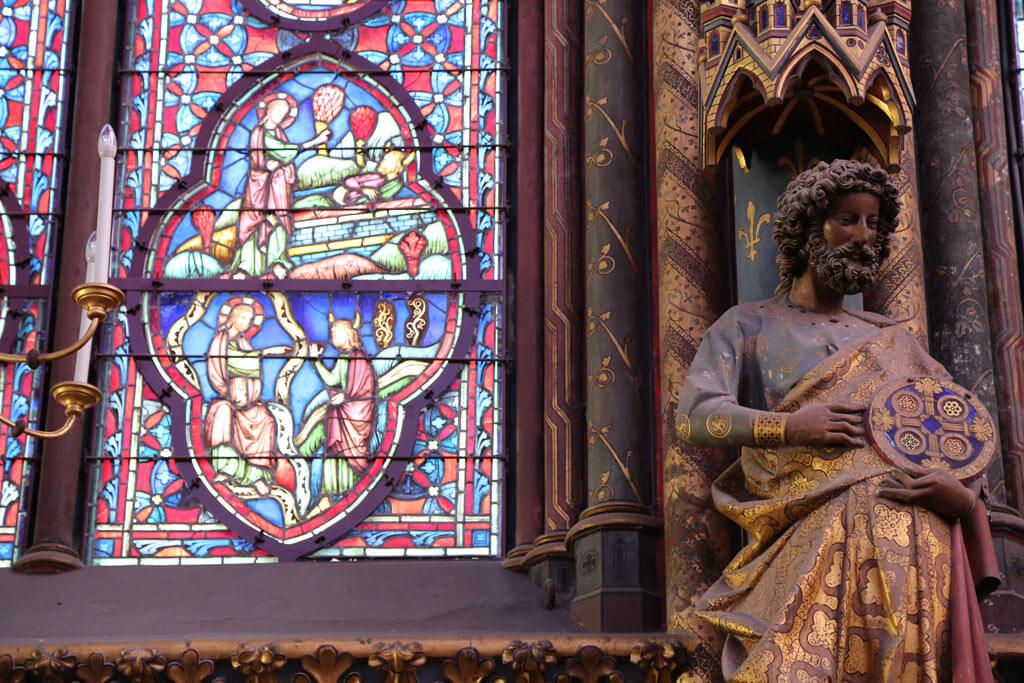
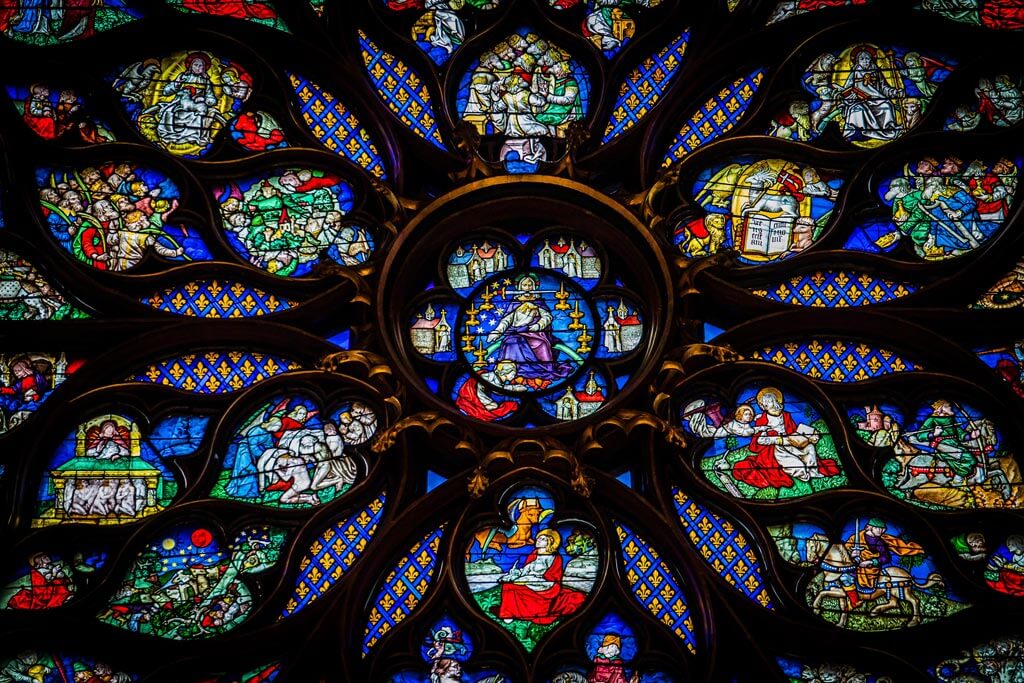
1. Sainte Chapelle Windows
In the 13th century, much of the world’s population was illiterate; that’s why churches were decorated with sculptures, stained glass, and paintings telling stories of the Bible.
The Sainte Chapelle stained glass windows of the Upper Chapel depict scenes from the Old and New Testaments of the Christian Bible. They begin with Genesis, the creation of the Earth and Heavens, Adam and Eve, and throughout the Chapel, they describe Christ’s life, death, and resurrection.
This Sainte Chapelle window guide reads from the first bay window in the north (on your left) and follows from left to right and from the bottom upwards.
North:
- bay #1 – Genesis (Creation). Adam, Eve, Noah, Jacob
- bay #2 – Exodus. Joseph
- bay #3 – Pentateuch Levi. Moses received the Law
- bay #4 – Deuteronomy. Joshua, Ruth, and Boaz
Chorus (from left to right):
- bay #5 – The Book of Judges
- bay #6 – Isaiah and the Jesse Tree
- bay #7 – Saint John the Evangelist, life of the Virgin, Childhood of Christ
- bay #8 – The Passion of Christ
- bay #9 – John the Baptist, Daniel,
- bay #10 – Ezekiel’s prophecies
- bay #11 – Jeremiah and Tobias
Right side (from the choir to the porch):
- bay #12 – Judith and Job
- bay #13 – Esther
- bay #14 – Samuel, David, Solomon
- bay #15 – The History of the Relics of the Passion
The last bay window (#15) depicts St Louis as the legitimate successor to the Biblical rulers (on the previous window). It depicts the finding of the Saint Relics and the Cross in Jerusalem by St Helena, their journey to Byzantium, their purchase by St Louis, and their final resting place in Sainte Chapelle.
2. Sainte Chapelle Rose Window
The reading culminates in the Apocalypse, or Final Judgment, which is shown in the Sainte Chapelle rose window in the west.
Replaced in the time of King Charles VIII in the last decade of the 15th century, its stylistic treatment differs from the windows of the 13th century. It comprises six large spindles that radiate around a central oculus bordered by six lobes.
Christ in majesty is in the center of this Sainte Chapelle rose window, dominating the entire iconographic program. Saint John, visible at the foot of Christ, is wrapped in a large red cloak, and the lower part of his body occupies one of the lobes. On the other lobes are represented the seven Churches where an angel is positioned at each entrance.
All the details mentioned by Saint John in the Apocalypse are found in the central oculus: the seven golden lamps evoking the seven Churches, the golden belt, the white hair, the seven stars in the right hand symbolizing the angels of the seven churches, his face shining like the sun. The two-edged sword coming out of the mouth evokes the Word of the Lord.


